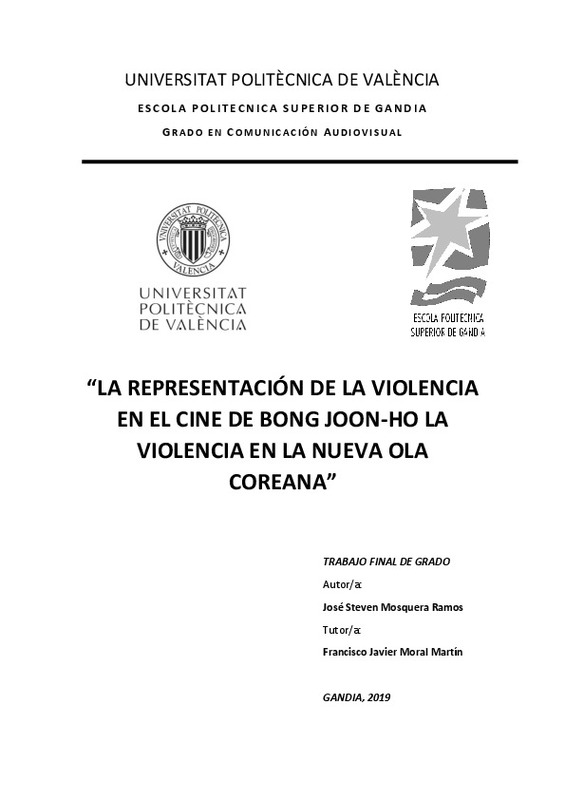JavaScript is disabled for your browser. Some features of this site may not work without it.
Buscar en RiuNet
Listar
Mi cuenta
Estadísticas
Ayuda RiuNet
Admin. UPV
La representación de la violencia en el cine de Bong Joon-ho: la violencia en la nueva ola coreana
Mostrar el registro completo del ítem
Mosquera Ramos, JE. (2019). La representación de la violencia en el cine de Bong Joon-ho: la violencia en la nueva ola coreana. Universitat Politècnica de València. http://hdl.handle.net/10251/128845
Por favor, use este identificador para citar o enlazar este ítem: http://hdl.handle.net/10251/128845
Ficheros en el ítem
Metadatos del ítem
| Título: | La representación de la violencia en el cine de Bong Joon-ho: la violencia en la nueva ola coreana | |||
| Autor: | Mosquera Ramos, José Esteven | |||
| Director(es): | ||||
| Fecha acto/lectura: |
|
|||
| Resumen: |
[ES] Este proyecto se centra en analizar las películas del director de cine surcoreano Bong Joon-ho, con la intención de profundizar en los métodos de representación de la violencia que aparecen en su filmografía. Para ...[+]
[EN] This project focuses on analyzing the films of South Korean film director Bong Joon-ho, with the intention of deepening the methods of representation of violence that appear in part of his filmography. To this end, a ...[+]
|
|||
| Palabras clave: |
|
|||
| Derechos de uso: | Reserva de todos los derechos | |||
| Editorial: |
|
|||
| Titulación: |
|
|||
| Tipo: |
|
recommendations
Este ítem aparece en la(s) siguiente(s) colección(ones)
-
EPSG - Trabajos académicos [5004]
Escuela Politécnica Superior de Gandia







